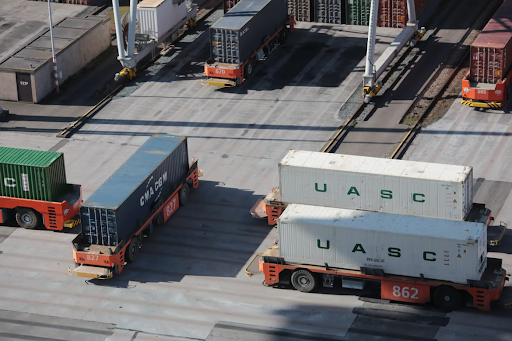One of every three compartments missed a planned cruising and was moved in December, as per information examination firm Sea Bits of knowledge. Holder rollovers are only one of the many difficulties the worldwide shipping local area is wrestling with today. Be that as it may, they can possibly wreck exchanging timetables and disabled person organizations. Which makes it even more significant for merchants and exporters to know about and ready for this danger.
In this blog, we bring a profound jump into the cargo rollover emergency, handling the accompanying points:
- What is a compartment rollover?
- What are its reasons and aftermath?
- What’s really going on with the current emergency?
- What is its effect?
- How might you keep your cargo from getting rolled?
- How would it be a good idea for you to respond if your cargo is rolled?
- What is a holder rollover?
A holder rollover, or cargo rollover, is the point at which your compartment neglects to get stacked onto its booked vessel and is obliged on a resulting transport Accounting For Shipping Company. There are various justifications for why holders get rolled, including however not restricted to:
- Overbooking of cargo by the transporter
- Vessel avoiding the port of stacking
- Mechanical issues with vessel
- Holder surpassing as far as possible for a transporter
- Inaccurate documentation
- Customs question
Shipments requiring parcel (moving the cargo starting with one vessel then onto the next on the way to its last objective) or those expected for lesser-realized objections have a more noteworthy probability of getting rolled. Moved cargo has ramifications for all gatherings included – the merchant, exporter, transporter and ports. It prompts:
Deferred shipments and despondent clients
Extra cost. On the off chance that the transporter is answerable for the rollover, it takes care of the expense of rescheduling. Be that as it may, assuming the transporter is dependable, he pays for the rescheduling
Steep demurrage and port stockpiling charges emerging out of the compartment being caught in a port, deferrals and planning issues
Cap is the current emergency about?
For the past half year, worldwide compartment rollover rates have not just remained high, they have been rising consistently. In December, the normal rollover rate at significant parcel ports studied by Sea Experiences was 37% while it contacted half at certain ports. This is up from a normal of 35% in November, 28.5% in October and 26.9% in September. To ascertain the rollover rate, Sea Experiences takes the level of cargo showing up at a port for parcel and leaving on an unexpected boat in comparison to initially booked.
Of the 20 worldwide ports for which Sea Bits of knowledge gathers information, 75% saw an increment in degrees of rollover cargo in December contrasted with the earlier month,” Sea Experiences COO Josh Brazil was cited as saying.
The emergency is especially terrible in Asia, home to a portion of the world’s driving parcel ports like Singapore and Port Klang in Malaysia. In Colombo, Sri Lanka, half of cargo was postponed in December while Gioia Tauro in Italy recorded a 62% rollover rate that month.
Why the spike in holder rollover rates?
There is more than one justification for it:
The essential explanation is a gigantic leap in imports to the US and Europe in the second 50% of 2020 after the lifting of Coronavirus limitations. High cargo volumes are typical during the August-November top season going before the Christmas-New Year occasions. Be that as it may, transporters are managing remarkable volumes this time around and don’t expect any let-up till profound into 2021.
Since a large portion of the cargo traveled West is being traded from Asia, especially China, there is a huge holder deficiency around here.
Shipping lines are working at their greatest limit and can’t add additional vessels. Hapag-Lloyd Chief Rolf Habben Jansen said the organization’s armada is completely sent and extended past its limit.
Every one of this implies ports across the world are clogged, overpowered and incapable to work at full productivity. A work lack, which hasn’t been facilitated because of the Coronavirus pandemic, has added to issues.
Effect of the rollover emergency
From postponements to abandoned cargo, the effect of increasing holder rollover rates is being felt in numerous ways.
Deferrals: Just 44.6% of boats showed up on schedule in December, down from 50.1% in November, says SeaIntelligence Counseling’s timetable unwavering quality information. December was the fifth continuous month that worldwide timetable dependability recorded its lowest level since SeaIntelligence began keeping records in 2011. As far as shipping lanes, on-time vessel appearances in November remained at 28.6% for Asia-North America West Coast, 26.4% for Asia-North America East Coast, 43.1% for Asia-North Europe and 46.1% for Asia-Mediterranean.
Reefers frozen at ports: A required Coronavirus test on frozen fish brought into China has prompted refrigerated holders piling up in Dalian port, apparently taking up to 20 days to clear traditions. Thus, reefers conveying fish are presently being redirected to Shanghai and Qingdao in China and even Busan in South Korea, prompting clog there also. What’s more regrettable, PDA Port Charges in UAE are running out of the force needed to keep these reefers running and cold, imperiling their cargo. While some shipping lines have quit tolerating appointments to Dalian till the circumstance improves, others are imposing an additional charge.
Vessel sliding: With shipping lines maximized, many (like Maersk) are falling back on “sliding” – postponing sailings that had effectively been promoted – in front of the Chinese New Year occasions beginning February 12. The lunar celebration is probably the most active occasion in the shipping schedule.











